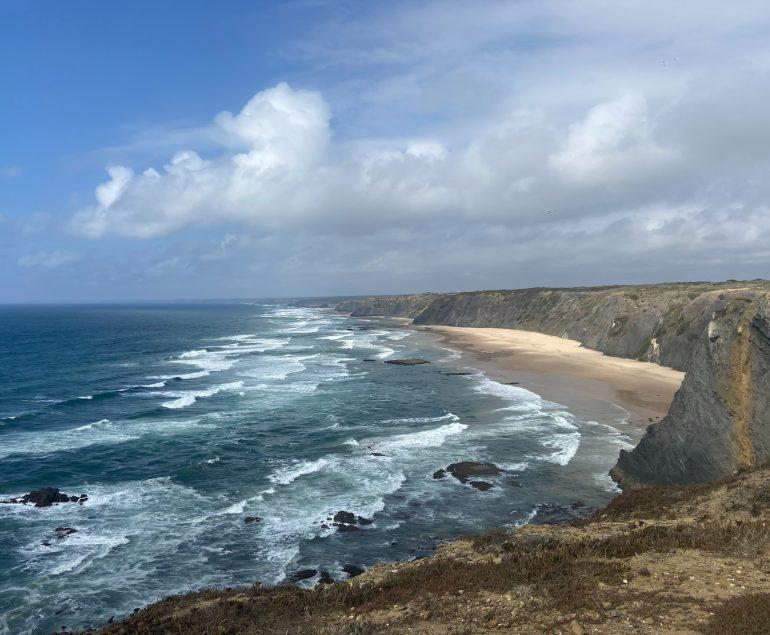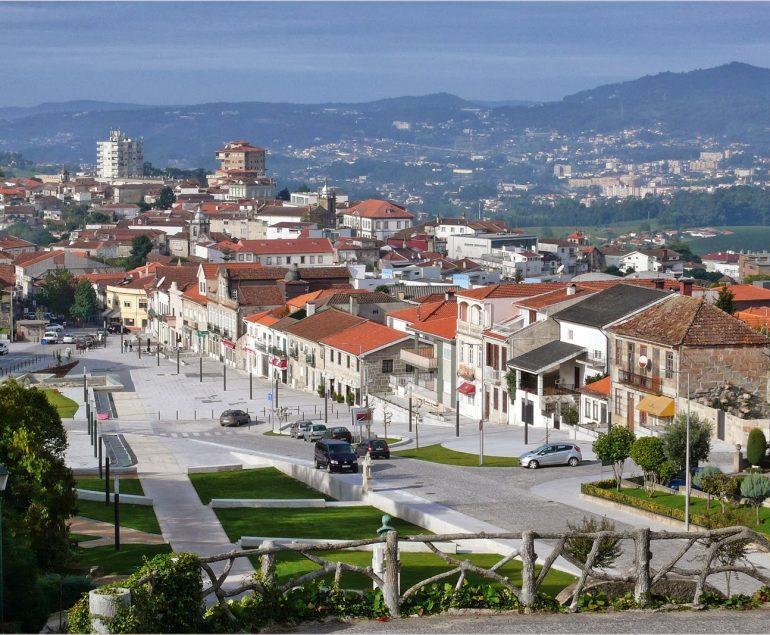Olhão, formally known as Olhão da Restauração, is a city and municipality in the Algarve area of southern Portugal.
The tiny alleyways of this picturesque and busy fishing harbour have a unique North African feel to them. The flat-roofed cottages gathered near the riverbank have a Moorish style hallmark, a relic from the days when Olhão traded with Morocco.
There are no noteworthy historical attractions in town. Instead, you’ll find a plethora of other enjoyable activities. Visitors are attracted by Olhão’s local culture, especially while browsing the busy harborfront market or wandering down the colourful Avenida da Repblica, the main boulevard.
Olhão is also a great place to start exploring the Ria Formosa National Park and the sandbank islands of Armona, Culatra, and Farol. The protected natural park is a home for marine life, and a sightseeing boat is an ideal way to enjoy this spectacular but delicate ecosystem. For sunbathers, the island beaches are serene, remote, and mostly unspoiled by commercialization.
Mercado

When Olho’s market opens, it’s typically still dark, and if you come before dawn, you may see groups of grizzled fishermen landing their catch on the harbourside. Business begins early in this town, and before daybreak, locals are already scouting out the finest deals.
The covered market is split by two early-20th-century redbrick structures with onion-domed corner turrets. The one on the left holds the fish market, while the one on the right sells meat, fruits, and vegetables. Both are lively by mid-morning. The variety of fish and seafood available is astonishing.
Marble-topped tables groan beneath the weight of glistening tuna, sea bass, and the ever-present sardine. In the second hall, the entire Algarve countryside appears to be for sale. Look for delicacies such as luscious figs and gorgeous pumpkins.
Come on a Saturday morning for a special treat, when outdoor merchants surround the quay and lure consumers with flowers and handmade jams.
Address: Avenida 5 de Outubro, Olhão
Quinta de Marim

Olhão is located on the border of the Parque Natural da Ria Formosa, and the park’s headquarters, Quinta de Marim, is three kilometres east of the town centre. The very rudimentary structure, which is located within the protected area, also serves as an environmental education centre.
The peaceful area is great for walking, and you may spend several hours following a designated nature route from the car park that meanders through conifer woods, coastal dunes, mudflats, salt marsh, and freshwater lagoons.
An antique tidal mill, the last of 30 that formerly operated on the Ria Formosa, is an intriguing archaeological site along the journey. Further up, the ruins of five Roman salting tanks from the 2nd century may be found.
The park is a birder’s heaven, with flocks of white storks regularly seen flying overhead, spiralling on a thermal. The uncommon purple gallinule is among the many resident wading birds, while the larger flamingo is a seasonal treat.
Keep a watch out for fiddler crabs, the innocuous viperine snake, and, if you’re lucky, the Mediterranean chameleon.
The route finally returns to the visitor’s centre in a circle.
Parque Natural da Ria Formosa

The protected Ria Formosa Natural Reserve covers 60 kilometres of the Algarve coastline, from Praia de Faro to Cacela Velha, and is one of Europe’s most important wetlands and a coveted draw for travellers who enjoy nature and the outdoors.
The lagoon region of marshes, salt pans, islands, and channels provides a home for resident and breeding wetland birds, including the uncommon purple gallinule. Numerous fish species can also be found in the lagoon waters.
A series of barrier islands — in reality, massive sand dunes – protect this pristine area from the Atlantic Ocean, acting as natural anchors for diverse flora and attracting fauna such as snakes, toads, and the secretive Mediterranean chameleon.
Nossa Senhora do Rosário

Exploration of the parish church of Our Lady of the Rosary should be included in Olhão old town sightseeing. This is the town’s most famous historic edifice, built between 1681 and 1698 and totally funded by donations from local fishermen.
Its whitewashed Baroque façade gleams in the sunlight, but it’s the exterior chapel of Nossa Senhora dos Aflitos, located at the back of the church, that draws the most attention. In a centuries-old custom, women still gather here to pray for the safety of their husbands when there is a storm at sea — a touching gesture of love.
Inside, if it’s open, tourists may climb the bell tower for breathtaking views of the old town centre’s network of alleys and flat-roof terraces, as well as the Ria Formosa beyond.
Address: Praça da Restauração, Olhão
Ilha da Armona

A series of barrier islands — flat, thin sand bars that are part of the protected Parque Natural da Ria Formosa – shield Olhão from the open sea. Ilha da Armona, a beautiful nine-kilometre sand bar accessible by ferry from the town’s seafront, is one of them.
Armona Island is a popular day-tripper destination in the summer, with holiday homes and a number of cafés. The swaths of beautifully smooth, white sand, on the other hand, are what lure people, and the further you walk away from the ferry pontoon, the less likely you are to share the beach with anybody else. Bring a picnic lunch and lots of sunblock.
Ilha da Culatra

The village of Olhão is connected to a series of barrier islands, which are long, narrow swaths of sand that protect the Parque Natural da Ria Formosa from the open sea.
Culatra is one of the busiest islands, with a population of roughly a thousand people living in Culatra settlement, on the spit’s eastern edge. The islanders avoid the trappings of contemporary life (no automobiles) in favour of a more traditional way of life that attracts visitors. Fishing is the major source of income, which explains why the seafood restaurants in the Algarve are among the best.
Another appealing aspect is the beach, which is a lengthy stretch of velvety white sand.
Ilha do Farol

The main feature of this famous holiday spot is a tall, scarlet-topped lighthouse (Farol). Farol is still part of Ilha da Culatra, but because the lighthouse is located on the island’s western edge, inhabitants refer to the region as “Ilha do Farol.”
There is a daily ferry service between Olhão and Faro, and tourism is well developed. Near the jetty, there are clusters of holiday houses and several good eateries. The wide beach is known for its vibrant cafés.
Museu da Cidade

Olhão’s lively City Museum is situated in an 18th-century manor house that originally served as the Maritime Commission’s headquarters and is architecturally significant.
The museum’s collection is essentially an illustrated history of the town and its vicinity. Bronze-Age pots, Iron-Age tool parts, and Roman and Islamic vases are among the archaeological artefacts on show on the ground level, which are modest yet intriguing.
Upstairs, a range of objects, including 19th-century fishing tackle and equipment, oil presses, and an exhibition of miniature fishing boats, illustrate Olhão’s industrial and nautical background. The walls are covered in vintage black-and-white images of Olhão and its people.
Address: Praça da Restauração, Olhão




